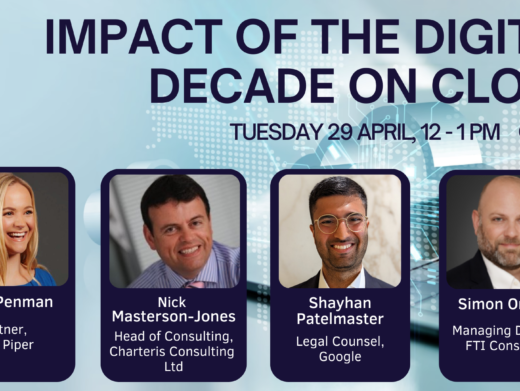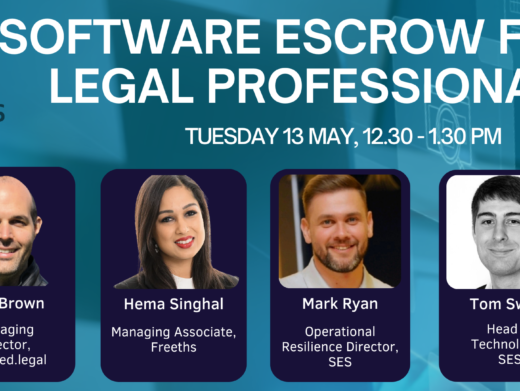My firm is shortly to move offices. This is exciting but we are of course engaged in space planning for the second decade of the 21st century. The age of electronic storage and filing means that there will be less room for paper – including publications.
I doubt whether I am going to be able to keep the six lever arch files of back numbers of this magazine going back to April/May 1994.
Before I dispose of them, I thought I should inform the readership of this. I also thought it would be interesting to have a closer look at three issues: April/May 1994, December 1999/January 2000 and December 2005/January 2006. The selection is not quite random since each of the dates has a certain significance but I am sure there are lessons of history.
1994,
The earliest first. Mr Eastham was not even editor at the time, coming on board later in the year. Following the retirement of Wendy London, the magazine was produced by an eight man editorial panel including still well known names like John Yates, Neil Cameron and Charles Christian and Paijit Savasdisara, who was then Chief Judge at the Ministry of Justice and Director of the Computer Centre at the Ministry of Justice in Bangkok.
There was a report by Evan Predavec, Director of the late lamented ‘LINK’, the Legal Information Network, a dial-in bulletin board pre-dating any extensive use of the Internet by lawyers. I remember this well and with some nostalgia. It was one of the uses to which I put my first modem, a dinky little 2baud Pace Microlin.
Evan sold the system based on its information resources, its graphical user interface (oh yes) and its e-mail system. ‘You will be able to send messages or entire files without ever using paper – someone has described the system as the ‘electronic dx’. He continued: ‘For a lawyer, there are some intriguing possibilities inherent in a legal E-mail system.’
What Evan did not mention was probably the most nostalgic feature of LINK: it developed into quite a sophisticated community site through its ‘General Chat’ – or social network as we would now call it. It was Roll-on-Friday without the advantages and drawbacks of anonymity. There was even the odd ‘LINK drink’ arranged. We should be aware that, in 1994, there were few mobile phones, not many lawyers had computers at their desks and the fax was the most sophisticated form of communication.
In amongst various other articles, such as the intriguingly named ‘Telematics for SME’s on Merseyside’, there was a glossary of technical terms by Chris Reed which stated ‘This Glossary is intended as a useful reference and reminder. It can be pulled out from the magazine and referred to from time to time –or passed on to a colleague with less expertise than you‘.
There was also an article by Jon Gould on the Society’s own bulletin board ‘SCROLL’ entitled ‘An introduction to Electronic Mail systems’. This contained a glossary of the emoticons and abbreviations with which we have become familiar. In the events diary for 26 April was a WordPerfect Legal User Group Meeting – Product update and demonstration of WordPerfect 6.0A.
1999
This issue straddled the turning of the millennium. For the community of IT lawyers, it saw the culmination of one of the biggest hypes of recent times: the collective hysteria known as the ‘Y2K’ or ‘the millennium bug’. The technical issue was itself not a hype: it was a serious problem addressed seriously by the industry. Companies and consultants simply investigated the issues and resolved them. The legal response was however extraordinary: books and monographs were published, C&L itself saw much discussion. Certain law firms apparently had teams on standby on 31 December 1999, just so that clients struck with disaster had someone to telephone. I’m not sure what they were going to do when planes started falling out of the sky: take out an injunction?. The real world-changing episode of planes falling out of the sky happened in the September of the following year and had little to do with computer programming.
There was in this issue thankfully only one article on the bug, a summary of US court cases by Susan J. McGhie Sang. The conclusion was:
‘It seems so far that the Y2K legal battles have been a storm in a teacup but if damage is suffered in the next millennium, the cases are unlikely to be as straightforward as those already decided….It remains to be seen whether the action movies of the 21st century will be based on the day the Bug struck. ‘
I think we all know the answer to that one.
This really has changed the landscape of practising lawyers and it is also responsible for neutral case citation and mandatory paragraph numbering in judgments. It is intriguing to see that the original name for BAILLI was delightfully ‘UKILELI’ (ignoring Irish sensibilities) and that the editor originally thought that BILII was a preferred name but saw flaws in it (biliousness, presumably).
2005
And so we are almost within living memory. And the photographs of the contributors are in colour. A notable feature of the development of the magazine has been the editor’s personal interjections and the long running feature ‘Predictions’ gives him the opportunity for a riff on ‘time travel’. ‘It’s not just the trips to Calne (return to the 1980s) and even more obscure parts of Wiltshire (return to the 1890s)…’
The Predictions themselves range from the unfortunately specific: ‘There will be a continuing mass investment in conveyancing technology in preparation for the forthcoming introduction of HIP’s in June 2007…’, to the inscrutable ‘There will be a lot of attention paid to Government IT procurement and how the all-too-common problems can be prevented and how they should be sorted out contractually when things go wrong’, to the bleedin’ obvious ‘It’s all gone mobile’. There was a warning about excessive use of Instant Messaging: I am not sure this has developed into a problem for law firms. Real social networking of the Facebook/Twitter variety had yet of course to get off the ground. Stuart Holden, then of Axxia, predicted that ‘the use of clever and amusing blogs (web logs) will become a major weapon in law firm marketing by the end of 2006’. There are of course more aware connoisseurs of the legal blogging scene than me but I am not sure there has been a great advance in the ‘clever and amusing’ stakes. Finally there was an article suggesting that ‘compliant e-mail archiving introduces significant operational benefits’.
Envoi
I could spend more time browsing these volumes, not just from a historical perspective but because many of the articles on both technical and legal issues have been extremely helpful and informative. I even look back, albeit with gritted teeth, to my own venture into attempted Swiftian satire: ‘Risk Management in Commercial Litigation: IT solutions’ in April/May 1998.
I once had a complete collection of the New Musical Express from 1974 to 1980. For those old enough or interested enough this would I think now be recognised as quite a valuable archive covering some seminal moments in rock history, including the emergence of punk. However, my mother, probably with some distractedly obtained permission, was able to dispose of them some time in the 1980s. Now I wish she had not. I doubt that the archive of Computers & Law has quite the same nostalgic value but unless anyone contacts me with an offer or suggestion, these volumes will be moved to the real life ‘Recycle Bin’.
Richard Harrison is a partner at Laytons: richard.harrison@laytons.com




